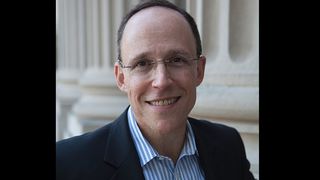Task Force a Needed Cost Of Defending Free Press

With media-bashing on the rise, the Radio Television and Digital News Association (RTDNA) is launching a multifaceted initiative to fight threats — from limits in numbers to ugly rhetoric — that impede journalists from doing their jobs.
“Somebody has to remind Americans of how fortunate they are to have a free press, and how important that is,” said Scott Libin, co-chair of the group’s First Amendment Task Force. “We want to be a vocal part of doing that.”
With the task force only months old, RTDNA is still ramping up the full-scale effort, although leaders say they are on the verge of rolling out an early action plan.
Without revealing the nitty gritty of what that entails, RTDNA leaders — with incoming executive director Dan Shelley leading the charge — said mobilizing the larger broadcasting industry to participate in the effort is key. The association is in the thick of meeting with key individuals at the station and station-group level, as well as with like-minded journalism associations in the hopes of developing partnerships, he said.
Moving forward, RTDNA, presumably with the partners its courting, plans a full-scale offensive involving the breadth of actions from advocating in Washington and working with newsrooms to combat issues, to launching initiatives aimed at changing the anti-media sentiment permeating the public.
“Our members are telling us they have seen a notable increase in vitriol that’s filtered down to even small communities across the country, from more acerbic Facebook posts to phone calls and verbal and even physical assaults,” Shelley said. “In my mind, when it begins to manifest itself in those kind of ways it really shows that it is seeping into the DNA of the American political mindset and culture.”
New Strategy Play
Broadcasting & Cable Newsletter
The smarter way to stay on top of broadcasting and cable industry. Sign up below
That is somewhat of a tactical change for the 70-year-old organization. Although RTDNA was founded in 1946 to promote the rights and ethics of electronic journalism, the group hasn’t necessarily been particularly loud in the trenches, Shelley said.
But when asked why the switch now, Shelley and Libin quickly point out the recent spate of incidents involving journalists being shut down — a burgeoning phenomenon that’s affecting local as well as national media.
The highest profile incident occurred last Thursday, when Greg Gianforte, the Republican candidate for Montana’s lone congressional seat, allegedly assaulted a reporter from The Guardian who asked him about the impact of the recently passed House health care bill.
Earlier in the month, West Virginia police arrested a Charleston-based Public News Service reporter after pulling him away while he tried to ask Tom Price, the visiting Health and Human Services Secretary, a question. The reporter, Dan Heyman, was charged with “willful disruption of governmental processes.”
A credentialed reporter who approached FCC commissioner Michael O’Rielly was pushed against a wall by security guards and ejected from the building. In Iowa, a judge who already slapped one reporter with contempt of court is setting strict rules for reporters covering the hit-and-run trial of The Bachelor’s Chris Soules.
“Journalists are facing hostility and open animosity at political events and in the course of doing their work,” Libin said. “And while the current fad is to bad-mouth the media, and certainly journalists aren’t perfect, someone needs to be out there pointing to the good things the press does.”
Too often, he said, everyday people don’t understand the role journalists play in this country — and how the work they do, including holding officials accountable, benefits democracy.
It’s not unusual, he said, for people to look at media members the way they do at other targets of contempt, such as members of Congress. People may find a person or two among representatives whom they trust. But as an overall group? Forget about it.
“I guess that’s human nature,” Libin said. “But I think it’s harmful, and dangerous and inaccurate.”
